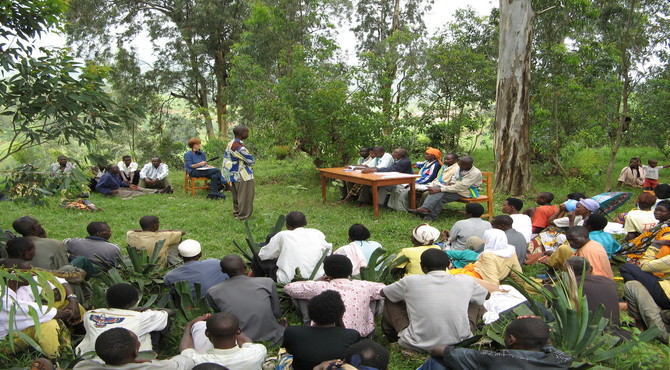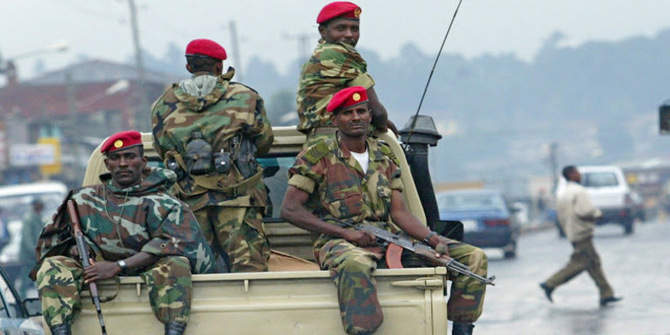The Rise of Africa’s Middle Class: Myths, Realities and Critical Engagements seeks to wrestle back the African middle class debate from the Afro-optimists with mixed success, according to LSE’s Rebecca Simson.
Over the last few years a flurry of reports and articles by international organisations, private firms and the media have celebrated the growth of Africa’s middle class. Many predict a brighter dawn for the continent by highlighting the positive outcomes of a larger middle class, such as a strengthened constituency for democracy and political accountability, a larger tax base, growing consumer demand and more progressive policy-making. In this collection of papers edited by Henning Melber, however, the sociologists and anthropologists strike back, seeking to wrestle the concept of middle classness from the economists and problematise the presumed political benefits of its rise.
The book comprises a collection of papers on Africa’s middle classes of rather varied quality and style, with four chapters on cross-cutting and theoretical debates and six country case studies examining middle class dynamics in Kenya, Nigeria, Angola, Mozambique, South Africa and Tanzania. Three broader themes run across these contributions. Firstly, the book seeks to distinguish class as an analytical concept from class as a measure of social stratification. Secondly, it queries the presumption that the middle class is a torchbearer for liberal democracy or that its rise necessarily heralds more progressive policy making. Thirdly, it argues that Africa’s emerging middle class remains an insecure and fragile new strata that is weak in relation to the real powerbrokers at the top of the wealth pyramid.
Dieter Neubert’s chapter on Kenya’s ‘unconscious middle class’ provides an engaging exploration of the first theme. He questions whether classes, in the Marxist-Weberian sense, exist in Kenya and concludes that the middle class label carries little analytical power. He finds that supposed middle class characteristics, from support for democracy to the priority placed on education, are no stronger among the Kenyan middle class than among the working or upper classes. Furthermore, Kenya’s political parties gain their support through ethnic coalitions rather than by appealing to the interests of economic strata, therefore Kenya’s nascent classes have no political representation. Tim Stoffel’s rather sweeping critique of the quantitative literature on class in Africa reaches a similar conclusion, albeit without bringing any new empirical evidence to the table. Jason Sumich’s chapter on Mozambique similarly sees the middle class as a creation of the independence party rather than an independent power base.
The second argument is perhaps best encapsulated in Sirkku Hellsten’s conceptual chapter challenging the notion of a middle class–democracy nexus. She coins the term ‘afro-libertarianism’ to describe the dominant African middle class value system, which combines neo-liberal economic values (such as individualism and profit maximisation), with community-oriented solidarity, linked to sub-national (read ethnic) loyalties. This ‘incoherent mixture of several very different value systems, in her view, combines the worst of both worlds and provides a rationale for retaining the political status quo rather than defending liberal democracy (p.106).
Several of the chapters also stress the relative weakness of the Africa’s new middle class denizens vis-à-vis the political classes. From Sumich’s piece on Mozambique, Amuzweni Ngoma’s study of South Africa’s middle class to Jon Schubert’s study of Angola (which makes the personal admission that he ‘still ha[s] difficulties understanding exactly how [middle class] people survive’ (p.149)), many of the writers highlight the precariousness of the emerging middle class, and its continued dependence on the state for jobs or other economic opportunities. Melber concludes the book by challenging the presumption of a growing middle class voice, and asks instead whether the middle class may come to play a more revolutionary role in the future.

Photo credit: World Bank Photo Collection via Flickr (http://bit.ly/2mY4yq7) CC BY-NC-ND 2.0
A few of the chapters buck these negative assessments of the transformative role of the middle classes, however. In contrast to Neubert’s findings from Kenya, Nkwachukwu Orji argues that there have been instances of clear middle class-led political activism in Nigeria and examines two particular cases: the Occupy Nigeria protest, in response to the removal of fuel subsidies in 2012, and the bring back our girls campaign, calling for government action following the Boko Haram kidnapping of 276 school girls from a school in Chibok.
Although it raises many thought-provoking questions and themes, the book feels like a rushed production. The quality of the pieces and writing is far from even and would have benefitted from a more rigorous editing process. It would also have benefitted from more conversation and coordination between the authors. The chapters bring out some interesting disagreements, yet the authors seem unaware of these tensions. Neubert, for instance, concludes that class in Kenya lacks political expression (in political parties), while Orji uses particular protest movements to discuss middle class agency. Although they focus on different countries, I would have liked to hear how these authors would respond to the other’s approach. Would Neubert’s conclusions have changed had he searched for middle class activism in particular campaigns rather than parties? Does Orji downplay party politics?
Melber concludes the volume by suggesting that Africa’s emerging middle class ‘is no social force in the making, which by status and definition would indeed be the torch bearer for more democracy, participation, human rights, social equality and redistribution of wealth beyond group-centred own benefits and interests’ (p.203). While his sombre tone may be a necessary corrective to the hopeful assumptions in some of the recent middle class literature, I also wonder if a stronger historical focus may have led to a less pessimistic assessment. Carola Lentz’s rich chapeau chapter on the middle class debate discusses some of the changing characteristics of Africa’s middle classes and possible consequences of this. Assessing Africa’s middle classes against their past and highlighting how and where social dynamics are changing may prove a more fruitful avenue for future study than examining them against a theoretical (19th century) ideal.
The Rise of Africa’s Middle Class: myths, realities and critical engagements. Henning Melber(ed). Zed Books. 2016
Rebecca Simson is a research student in the Department of Economic History at LSE.
The views expressed in this post are those of the author and in no way reflect those of the Africa at LSE blog or the London School of Economics and Political Science.





